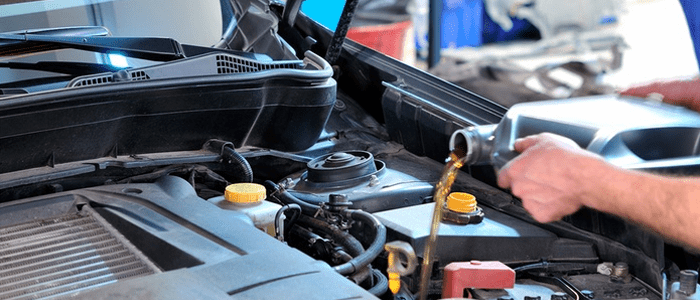
Modern cars have a number of different fluids that need to be checked, depending on your car, you will almost certainly have three or more of the following: brake fluid, power steering fluid, transmission fluid, coolant, and washer fluid. These usually have markers on the reservoirs, so you can see when they are getting low. If any are getting low, top them up with the relevant liquid.
The legal minimum tread depth for cars 1.6mm across the central three-quarters of the tread and must meet this minimum requirement around the complete circumference of the tyre.
You should check each of your tyres at least once a month and ensure that your spare tyre, if you have one, also has a legal tread depth.
The 20p test is an easy and quick way to check that your tyres are within the legal tread depth limit. All you need is a 20p coin. Insert the coin into the tread grooves on the tyre. If you can’t see the band that runs around the edge of the coin, your tyres are above the legal limit.
If any of the band is still visible above the rubber tread, your tyres could be unsafe, give us a call or drop in and we will check them for free to make sure you are safe and legal.

If tyres are inflated under or over the recommended pressure, it can affect the performance and handling of the car and life of the tyre.
A tyre inflated to the recommended pressure has maximum contact with the road surface to giving optimum performance and means that the tyres will last longer.
Manufacturers have recommendations for the tyre pressures of each of the cars that they produce. The recommended pressures can usually be found in the car’s handbook and sometimes printed inside the petrol cap.
You can check the pressure at a petrol station using the air and water machine, just remove the dust caps from the valve on each tyre, set the desired pressure and attach the air hose, the machine will do the rest.
If you are not sure, here’s our other guide to check your tyre pressure or pop in and we can check for you and show you what to do.
Most modern cars will tell you when one of the main bulbs in your car is not working, but it is always worth checking to see for yourself. This should include headlights, sidelights, rear lights, brake lights, hazard lights and indicators.
Brake lights can be a little difficult if you are on your own but can be checked by reversing up close to a wall or flat surface like a garage door and applying your brakes. Using your rear-view mirror, you should be able to see if your brake lights come on and off against the surface. Some bulbs can be tricky to replace but most can be changed quite easily even without mechanical knowledge.
Unlike an MOT, servicing your car is not mandatory, but the importance of servicing should not be underestimated just because you don’t HAVE to do it. During the recession a few years ago, people were trying to save money by not servicing their cars, this led to breakdown companies having a big uplift in the number of breakdowns, it is no coincidence.
So, it is important to ensure you service your car regularly to prevent the chances of breakdowns and improve reliability of your car. We offer a range of servicing options to suit all makes of cars, and they are much more affordable than dealer servicing, get in touch to find out more. And don’t forget that hybrid and electric vehicles need regular servicing too!
Book your next petrol or diesel service at Motorvation Northampton now.